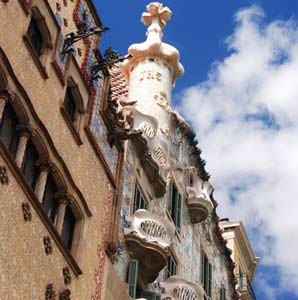 From cobblestoned medieval lanes to golden sandy beaches, a guide to Barcelona’s best neighborhoods.
From cobblestoned medieval lanes to golden sandy beaches, a guide to Barcelona’s best neighborhoods.
- The hillside neighborhood of Pedralbes, in northwestern Barcelona, is full of 19th- and early- 20th-century mansions (built by textile barons and industrialists), but its crowning glory is the serene 14th-century cloister Monestir de Pedralbes.
- Urbanized after 1860, L’Eixample (the Expansion) is now the city’s main shopping district and the world’s top repository of Art Nouveau architecture.
- Catalonia’s big art players—the Museu Nacional d’Art de Catalunya, the Fundació Joan Miró, CaixaForum, and the Mies van der Rohe Pavilion—are concentrated on Montjuïc, a small mountain overlooking the port.
- A 1,000-year-old agricultural hamlet on the northern outskirts of the city, the Sarrià-St. Gervasi area retains its village character alongside its fleet of chic restaurants and boutiques.
- The former village of Gràcia has long been fertile ground for progressive thought. Still resolutely young and independent, the area is known for its outdoor cafés, music- filled bars, and late-night dining.
- La Rambla is a permanent carnival starring bird vendors, flower stalls, newspaper kiosks, the Boqueria market, and a vast cosmopolitan cast.
- Though largely gentrified thanks to the arrival of the Museu d’Art Contemporani de Barcelona and attendant galleries, the former slum of El Raval maintains a lively, global vibe.
- Ancient Roman walls and Gothic palaces frame the Barri Gòtic’s pedestrian streets, which are filled with antiques stores and cafés—all surrounding the central Catedral de la Seu.
- A colorful fishermen’s quarter, the laid-back Barceloneta is lined with seafood restaurants and lovely beaches.
- What used to be the heart of the city (El Born) and the waterfront district (La Ribera), is now Born-Ribera, a haven for hip taverns, boisterous restaurants, Renaissance palaces, and cultural icons such as the Museu Picasso.